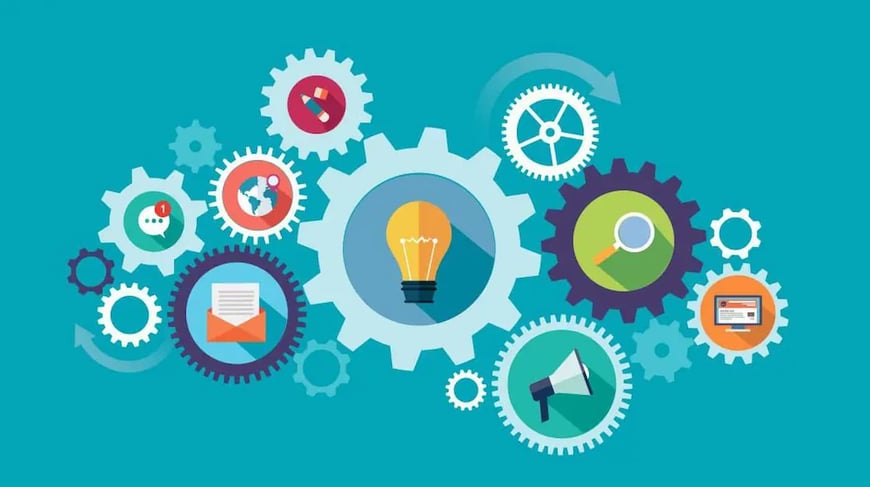In the last few years, Silicon Valley investors have dedicated a tremendous amount of resources to finding a solution for team task management. But anyone who has ever tried to complete a team project knows that it can be akin to herding cats. It turns out that it’s difficult enough to get people to write down what they’re doing in the first place—let alone to coordinate those behaviors across remote teams functioning off of a cloud-based SaaS system.
The result has been the rise of a virtual industry of productivity apps like Evernote, Asana, Jira, Get Flow, Teamly and others, which all claim to provide the perfect solution for your team. For many of us, these options just end up confusing the issue even more.
Why is no task management app perfect for your company?
The reason is that we’d all like a project management tool to be more than just a task manager. To be truly successful, it would need to track tasks and deadlines, but also provide the context that’s typically exchanged in meetings, emails, conversations, notes, and a host of other communications—all in one place. So far, no one app does everything.
The cloud community’s solution to this has been two-fold. They either tell us that this is the next wave of cloud apps or create bundled integrations with sister apps that can be implemented (often for a fee). These integrations are implemented in 3 ways:
- Clunky native platform development like Salesforce’s task lists.
- Expensive web app automation services like Zapier and IFTT that need to be enabled separately for each process.
- Via open-source API developers, as Evernote does, which can be quite hit or miss in terms of results.
Obviously, none of these options are great.
So what should you look for?
You’ll need to put together a few different apps to achieve the best apps for productivity. With some training and a dose of company culture consideration, you can achieve what’s necessary for your team. However you cobble it together, here are the 12 features you’ll need to integrate into any task management system that works.
- Task Assignment: Dividing up a project or task needs to be something that anyone can do from their home screen, instead of waiting for an admin to set it up for them. Your personal task management app should allow all users should be able to assign tasks to one another in your system.
- Task Acceptance or Notification: The basic rule of task management is to be able to vouch for things that are your responsibility. No team member can do that without knowing what’s landed on their plate. The system should allow everyone to accept a task or, at the very least, notify them that one has been assigned.
- Prioritization: The ability to rank tasks in terms of importance helps tremendously with procrastination. It focuses your team on priorities instead of imminent deadlines and helps with delegation in the workplace.
- Centrally-controlled security permissions: Your administrator will need to prevent conflicts of interest at a team and project level. As with any enterprise tool, security permissions are key to keeping client information sacred.
- Calendar Syncing: Wouldn’t it be great if the task management tool was able to sync with your real life calendar, so that your to-do list for the day actually makes sense in context of your scheduling management? Good luck finding this one in an off-the-shelf tool.
- Great Customer Support & Training: Task management tools are complex, and so are everyone’s individual workflows. Trying to determine how they match up will require quite a bit of hand-holding, so pick a provider that’s willing to work with you. (Or at least has lots of training materials online!)
- Pricing: Everything has a budget when it comes to enterprise apps. And task management programs run the gamut from free to hundreds of dollars a month. Make sure your chosen format fits your company’s ideal price.
- File Attachment: Going back to the communication point, you’ll need to provide contextual documents emails, graphs, pictures, etc. when assigning tasks to each other. It would make all the difference to be able to put these into the same place where the task itself is being tracked.
- Integrations: If your system is to work, it will be important for task management tools to play well with the other apps that your team uses every day, e.g., your CRM networking system, your internal Wiki or other tools. Pick a task management tool that fits your team’s needs and it is more likely to get adopted.
- Chat System: Whether it’s within your project management app or an external system, the project workflow will need to have a quick chat ability to facilitate communication between your team.
- Statistics: We’ve talked before about the need to monitor and tweak app usage to complete a rollout. You’ll need to be able to see who using your task management tool and how often they’re logging in to see whether it’s truly a team tool.
- Mobile App: To truly adopt the app, your team should need to access it on the go, during meetings, on the bus ride home and pretty much anywhere else. Only apps with a mobile option can fit the bill.
Become A More Effective Leader
Join executives, entrepreneurs, and industry-leading professionals from around the world who use our research-backed advice and services to become more effective and productive leaders. Download our free guide:
How to Use Delegation to Be a More Impactful Leader
We understand your inbox is already packed and promise to only send you relevant content.
